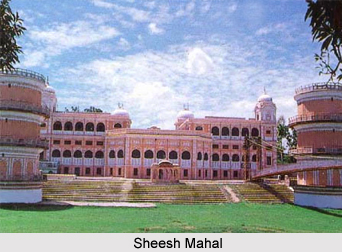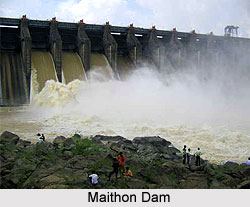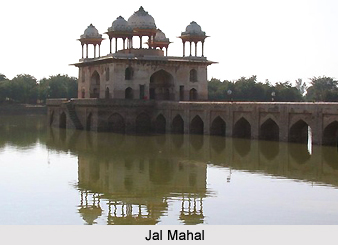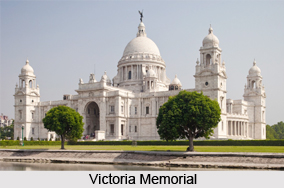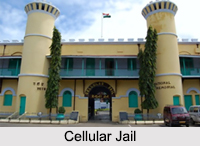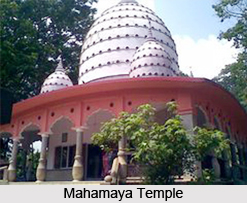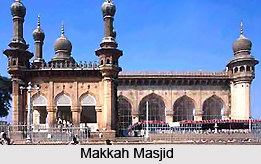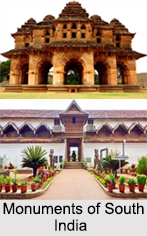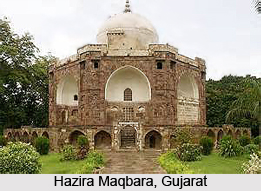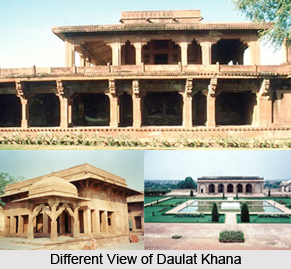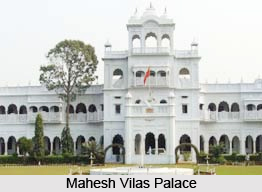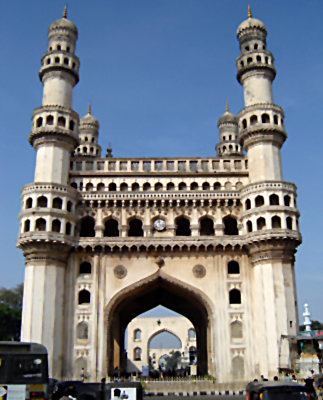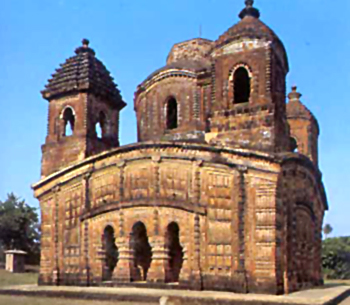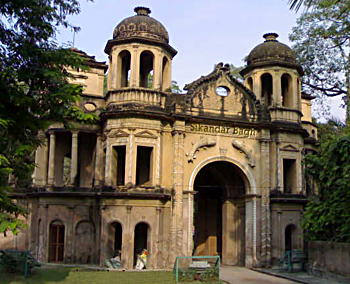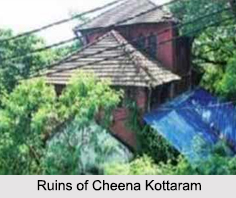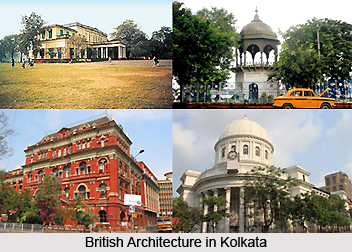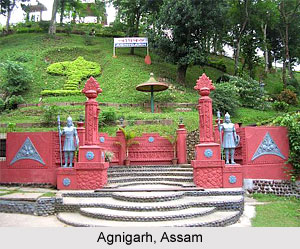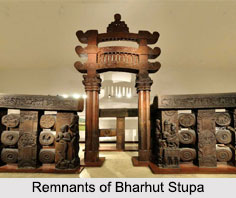The image of Lord Sambhavnath, the Third Jain Tirthankara, at Khajuraho Temples has been well represented through images. The Jina is seen sitting on lotus spread on an ornate cushion. It is 50"x34" in height. The pedestal on which the idol is placed is supported by two pilasters. However, the two pilasters are now in damaged condition. The figures of the lion on the pedestal are also damaged. The dharmachakra in the present example is flanked by two devotees, below which is carved a very small figure of a horse, the vehicle of the third Jina, Sambhavnath.
The yaksha and yakshi figures can be seen in the two shallow and pillared niches. An image of the Yakshi can be seen on the left corner. It is two armed and is in abhaya mudra. She holds a lotus respectively in her right and left arms. An image of the Yaksha is visible on the right side. It also has two arms and holds a skull cup in his right hand, while the other hand shows a mongoose skin purse. It seems that the Yaksha is Sarvanubhati, the most favoured and important yaksha at Khajuraho Temples. On either side above these figures a standing Jina can be seen. It is slightly smaller in size than the middle Jina and is surmounted by a canopy of five hooded serpent. However, all its top hoods are now in damaged state. These Jinas stand as naked on brackets. Their hair is disposed in curls. The Jinas are surmounted by five hoods and may be identified as Suparshavnatha, the seventh Jain Tirthankara.
Apart from the Jinas a female figure is also visible at each edge. She is adorned with jewellery and carrying with one hand a flywhisk turned downwards, and the other hand resting on thigh. These female figures represent as the attendants of the flanking Jinas. Further up on the top of the pilasters a miniature shrine is visible that houses a seated Jina carved on each side with three successive tiers and throne frame animals. One of the two riders of each side is seen holding a pitcher. A ruined sculpture of a seated Jina is visible above the trichatra. At each top back slab a hovering figure has been carved. They are seen engaged in playing flute. The hair of the Jina is curled up with a top knot. The halo round the head comprises blossom circlet and prominent garland like outer band. The image can be dated back to the latter half of the 11th century.
